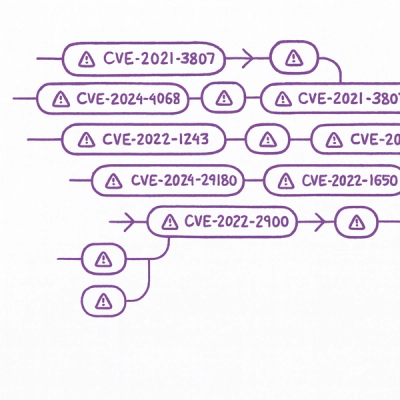
Security News
Astral Launches pyx: A Python-Native Package Registry
Astral unveils pyx, a Python-native package registry in beta, designed to speed installs, enhance security, and integrate deeply with uv.
lazy-initializer
Advanced tools
Transparent generic deferred initializer which waits until your first-time use.
Lazy Initializer is a generic deferred object initializer, which will creates a wrapper which waits for your first time use, then it will triggers the initialize function you defined. The concept is similar to C#'s Lazy class, but more transparent implementation in ES6.
Simple usage for wrapping a property in a class:
import { LazyProperty } from 'lazy-initializer'; // or require(...) if your environment does not support import.
class Schrodinger {
@LazyProperty
get cat() { return Math.random() > 0.5; }
// Setter will be called when the value has been assigned first time.
// Setters can be not defined, but then the property will be read-only.
set cat(value) {
console.log(`It is ${value ? 'alive' : 'dead'} now!`);
assert.strictEqual(value, this.cat);
}
}
const isAlive = new Schrodinger().cat;
Alternatively, if your transpiler or environment does not support ES6 decorators:
import { LazyProperty } from 'lazy-initializer';
class Schrodinger {
get cat() { return Math.random() > 0.5; }
}
LazyProperty.transform(Schrodinger, 'cat');
Also, you may manually craete a new lazy property without defining the getter/setter before:
import { LazyProperty } from 'lazy-initializer';
const someObject = {};
LazyProperty.define(someObject, 'somelazyField', () => 'boo!');
// Then, `someObject` has a `somelazyField` now!
// You may batch define more properties like this:
LazyProperty.define(someObject, {
someOtherLazyField: () => 'another one!',
someMoreComplicatedLazyField: {
init: () => 'More controllable behaviour!',
enumerable: false,
configurable: false,
writable: true,
},
});
Another advanced usage is wrapping a whole object (which uses proxy):
import { LazyProxy } from 'lazy-initializer';
const somethingExpensive = LazyProxy.create(() => {
// Some heavy stuffs...
return someHeavyObject;
});
// You may treat the object is loosely equals to the initialized object itself.
const someValue = somethingExpensive.someValue();
If the lazy initialized object will be used as constructors:
import { LazyProxy } from 'lazy-initializer';
const SomeHeavyConstructor = LazyProxy.create(() => {
// Some heavy stuffs...
return Foo;
}, true);
// The true means this will use as constructor,
// the proxy internals will do some tweaks to make this to be supported.
const someValue = new SomeHeavyConstructor();
For more information, please see docs.
In your Node.js project path, run:
$ npm install --save lazy-initializer
or yarn
$ yarn add lazy-initializer
This module make uses the new ES6 features, especially proxy, therefore it requires at least Node.js 6+ to works.
ECMAScript 6 compatibility table
FAQs
Transparent generic deferred initializer which waits until your first-time use.
We found that lazy-initializer demonstrated a not healthy version release cadence and project activity because the last version was released a year ago. It has 1 open source maintainer collaborating on the project.
Did you know?

Socket for GitHub automatically highlights issues in each pull request and monitors the health of all your open source dependencies. Discover the contents of your packages and block harmful activity before you install or update your dependencies.

Security News
Astral unveils pyx, a Python-native package registry in beta, designed to speed installs, enhance security, and integrate deeply with uv.

Security News
The Latio podcast explores how static and runtime reachability help teams prioritize exploitable vulnerabilities and streamline AppSec workflows.

Security News
The latest Opengrep releases add Apex scanning, precision rule tuning, and performance gains for open source static code analysis.